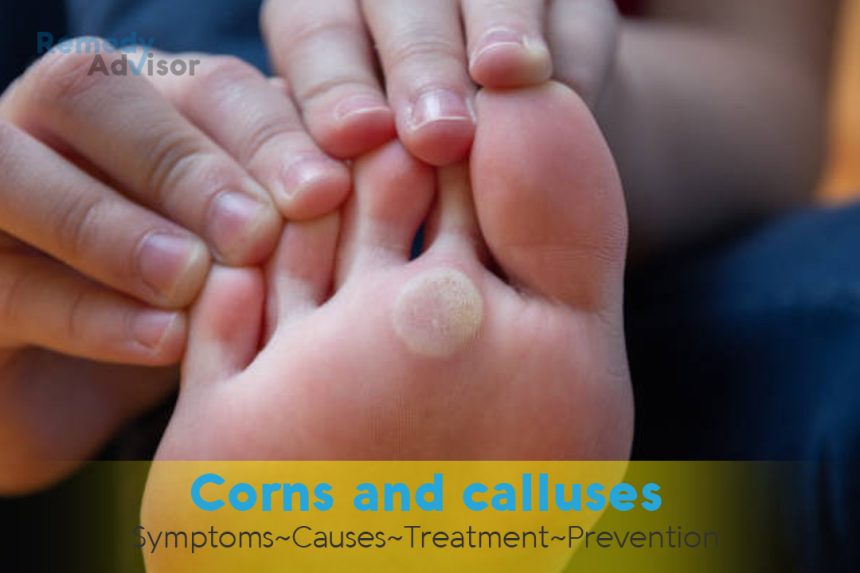What is it
Corns and calluses are thick, hard growths of skin formed in response to excessive pressure and chafing. People with flat feet are particularly susceptible to them. Corns, which usually appear on the toes, are thickenings of skin around a core, whose apex points inward. Most hard corns appear on the little toe; soft corns appear on the web between toes. Maximum hard corns appear on the little toe; soft corns normally appear on the web in between toes. Calluses are thickened pads of skin, usually on weight bearing portions of the sole. They also can develop on the hands if excessive pressure and friction occur.
Symptoms
Corns
- Patches of hardened, thick, tough skin that appear on the tops of toes or between the toes, and may or may not be tender or painful.
Calluses
- Hardened, tough, thickened areas of skin that typically appear on the soles of the feet, palms, and fingertips.
What causes it
Corns
A hard corn, which often develops on the toe joint, is generally caused by pressure from ill- fitting shoes. Soft corns are generally caused by excessive moisture in the fourth toe web or from pressure of the fourth and fifth toe rubbing against each other.
Calluses
Rubbing against the skin, typically from ill-fitting shoes, will first cause blisters to form. If the blisters aren’t treated, continued rubbing in that area will cause the skin to thicken as a tough layer of dead skin builds up. On the hand, calluses develop from the pressure of repetitive motion.
What if you do nothing
Corns and calluses are minor inconveniences and need no special care. (However, if you have diabetes mellitus, special care must be taken because of the possibility of infection.) Whether the cause of the problem is a particular activity or ill-fitting footwear, once it is eliminated, corns and calluses generally go away within four weeks.
Home remedies
Soak
The best way to treat corns and calluses at home is to soak the foot in warm (never hot) water until the hardened skin softens, then gently apply a pumice stone or callus file; don’t rub the area raw. It may take several treatments.
Protect the area
Use a light pad or bandage. Moleskin comes with adhesive and can be trimmed to fit the spot and relieve pressure.
Remove the com
Many over-the-counter com remedies are available, most containing salicylic acid. Though the Food and Drug Administration (FDA) has approved these products, most doctors advise using them only with caution; they can bum the surrounding healthy skin.
Prevention
Make sure shoes fit properly
Have your feet accurately measured by an experienced shoe salesperson. Shoes should be wide enough and sufficiently cushioned to protect the feet.
Avoid extended high-heel use
These shoes put extreme pressure on the toes and can lead to corn formation.
Wear gloves
This will protect the hands from blisters and callus formation.







